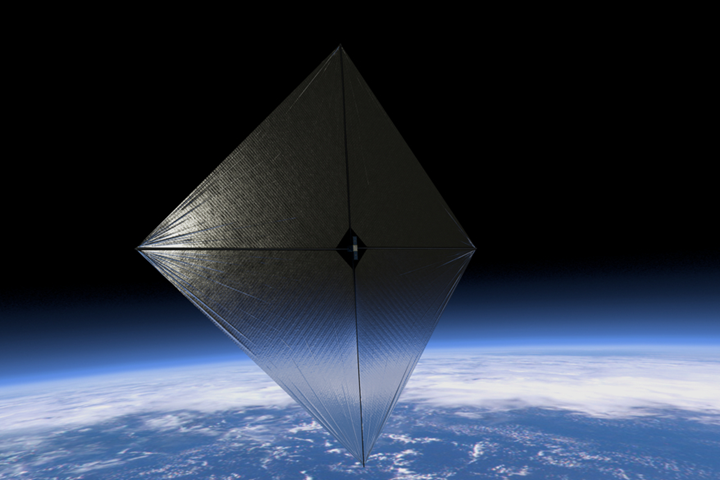NASA develops advanced composite solar sail system
The ACS3 mission expects to demonstrate the successful deployment of the composite boom solar sail in low-Earth orbit to guide the design of future, larger-scale composite solar sail systems.

NASA (Washington, D.C., U.S.) is developing new deployable structures and materials technologies for solar sail propulsion systems destined for future, low-cost deep space missions. Just as a sailboat is powered by wind in a sail, solar sails employ the pressure of sunlight for propulsion, eliminating the need for conventional rocket propellant. NASA’s Advanced Composite Solar Sail System (ACS3) mission uses composite materials in its novel, lightweight booms that deploy from a CubeSat, which measures approximately 23 x 23 x 34 centimeters, or slightly larger than a toaster oven.
The primary objective of the ACS3 mission is to demonstrate the successful deployment of the composite boom solar sail in low-Earth orbit. According to NASA, this is the first use of composite booms, as well as sail packing and deployment systems, for a solar sail in orbit.
The ACS3 mission’s sails are supported and connected to the spacecraft by booms, which function much like a sailboat’s boom that connects to its mast and keeps the sail taut. The composite booms are made from a polymer material that is flexible and reinforced with carbon fiber — compared to previously flown metallic deployable booms, these are 75% lighter and experience 100 times less in-space thermal distortion. This composite material can be rolled for compact stowage, but remains strong and lightweight when unrolled. NASA notes that it is also very stiff and resistant to bending and warping due to changes in temperature. Solar sails can operate indefinitely, limited only by the space environment durability of the solar sail materials and spacecraft electronic systems. The ASC3 mission will also test an innovative tape-spool boom extraction system designed to minimize jamming of the coiled booms during deployment.
Data obtained from the ACS3 mission will guide the design of future, larger-scale composite solar sail systems that could be used for space weather early-warning satellites, near-Earth asteroid reconnaissance missions or communications relays for crewed exploration missions. The ACS3 mission is set to launch no earlier than mid-2022.
NASA suggests that interest in solar sailing as an alternative to chemical and electric propulsion systems continues may increase. Using sunlight to propel small spacecraft in lieu of consumable propellants will be advantageous for many mission profiles and offers flexibility in spacecraft design.
Related Content
-
Composites manufacturing for general aviation aircraft
General aviation, certified and experimental, has increasingly embraced composites over the decades, a path further driven by leveraged innovation in materials and processes and the evolving AAM market.
-
Combining multifunctional thermoplastic composites, additive manufacturing for next-gen airframe structures
The DOMMINIO project combines AFP with 3D printed gyroid cores, embedded SHM sensors and smart materials for induction-driven disassembly of parts at end of life.
-
The potential for thermoplastic composite nacelles
Collins Aerospace draws on global team, decades of experience to demonstrate large, curved AFP and welded structures for the next generation of aircraft.














.jpg;maxWidth=300;quality=90)

